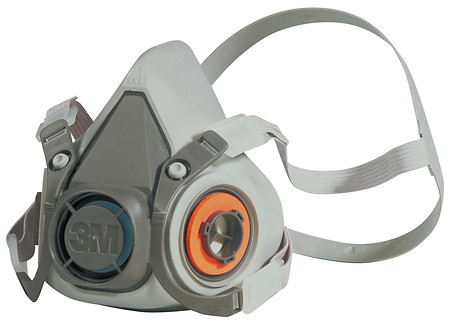Respiratory Protection Training
If you use respirators at work for protection against hazardous substances then you are required to provide training and ongoing refresher training to your employees. (AS/NZS1715:2009, Selection, use and maintenance of respiratory protective equipment)
HSL has 13 years of experience delivering respiratory protection training. We customize training to suit your needs ranging from onsite toolbox talks, practical demonstrations and classroom style learning.
Note: SCBA training is beyond the scope of this training.

Recommended training topics as per Worksafe and AS/NZS1715:
-
Types of respiratory hazards
-
Air monitoring
-
Risk assessment
-
Health effects and monitoring of respiratory hazards
-
Respirators (types, uses, limitations, cleaning, storage, fit and fit testing
-
Roles and responsibilities
Note: depending on the workplace respiratory health risks, not all the above topics may be required.
Hearing Protection Training
If you use hearing protection for protection against hazardous noise levels
then you are required to provide training to your team members.
(HSWA, AS/NZS 1269 & ACOP Management of noise in the workplace)
Training should be given to:
• All those exposed to excessive noise.
• Those responsible for the acquisition and maintenance of hearing protectors
Recommended training topics as per AS/NZS 1269:
• brief overview of noise, the hearing mechanism;
• reasons for wearing hearing protectors;
• selection of suitable hearing protectors;
• use and proper fitting of hearing protectors;
• importance of wear time and consequences of hearing protector removal;
• maintenance and storage of protectors;

Respirator Qualitative & Quantitative Fit Test Workshops
WHO WOULD BENEFIT FROM ATTENDING THIS WORKSHOP?
Anyone....
-
wishing to conduct respirator fit testing at your workplace
-
wanting extra coaching/upskilling/refreshing on existing fit test practices
TRAINING CONTENTS:
-
preparting to fit test
-
testing protocol (OSHA 1910.134 Appendix A)
-
respiratory hazards and respiratory selection considerations
-
limitations of fit testing methods
-
care of fit test equipment
-
medical assessment recommendations (AS/NZS1715)
-
troubleshooting, health & safety considerations
-
documentation
-
fit testing practice and review
Information is based on AS/NZS1715, ISO 16975-3, and OSHA 1910.134 App A.

COURSE 1 - Qualitative Fit Testing Course (total of 9 hours learning)
- 3 step competency based process
Virtual course - minimum 2 people and maximum 10 people
Onsite training course - minimum 2 people, maximum 6 people
Must have access to own fit test kit & respirators for the training
To complete the course each candidate must also complete a theory and practical assessment, based on ISO 16975-3 competency criteria
COURSE 2 - Quantitative Fit Testing Course (total of 9 hours learning)
- 3 step competency based process
Onsite training - minimum of 2 people and maximum 6 people (must have own Portacount machine)
To complete the course each candidate must complete a theory and practical assessment, based on ISO 16975-3 competency criteria
COURSE 3 - Fit Testing Refresher (2 hours per method)
Practical resit (virtual)
Short theory assessment on OSHA prot and troubleshooting scenario's.


